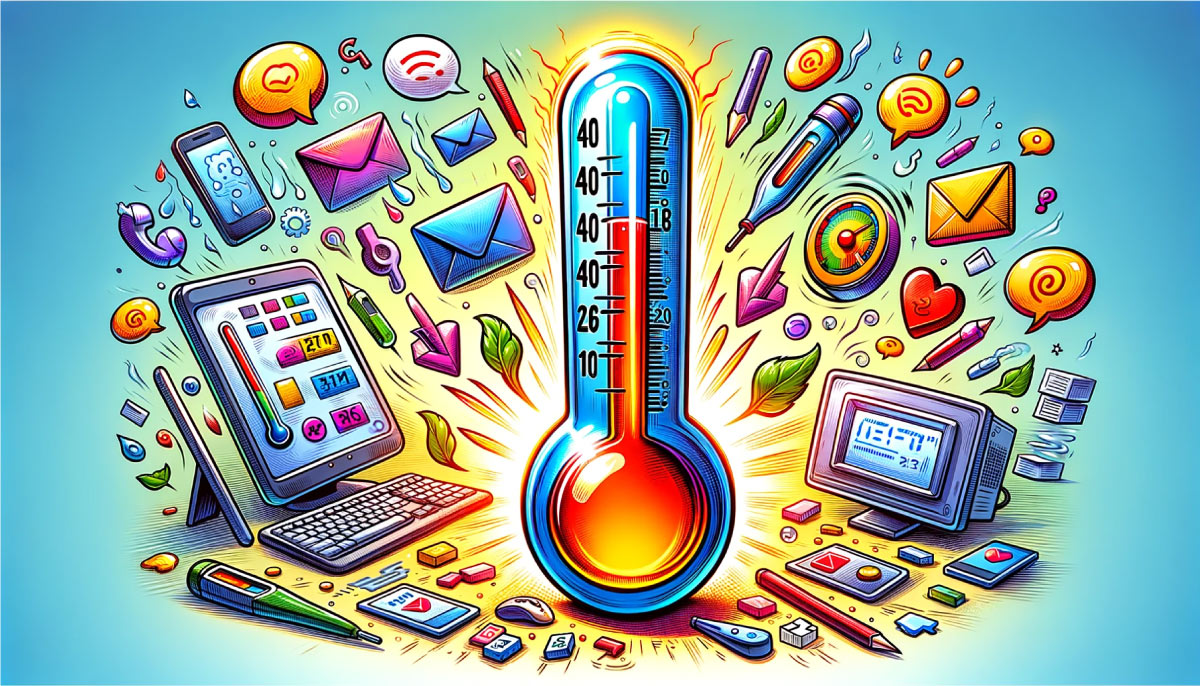SMTP Warmup : concepts and facts

What is SMTP?
SMTP stands for Simple Mail Transfer Protocol. It's a set of guidelines used for the sending of emails across the Internet. In the context of email marketing, SMTP is crucial because it serves as the underlying technology that allows marketing platforms and email servers to send out bulk emails, newsletters, and promotional content to a list of subscribers.
Email marketing tools use SMTP servers to ensure that the emails you send actually reach your audience's inboxes. These servers handle the complex process of directing your emails through the various networks and servers on the Internet, finally delivering them to the recipient's email server.
For businesses and marketers, choosing a reliable SMTP service provider is important. The provider's reputation and the way they manage their email sending can greatly affect email deliverability rates—that is, the likelihood that your emails won't end up in the spam folder but in the intended inbox. SMTP providers also often offer features like analytics, which can help you track the success of your email campaigns by showing open rates, click-through rates, and other important metrics.
Concept of SMTP warm up
Why do I need SMTP warmup?
SMTP warmup is an important concept in email marketing and deliverability. When you start sending emails from a new IP address, ISPs (Internet Service Providers) don't have any data on your sending habits or reputation. Suddenly sending a large volume of emails from this new IP can trigger spam filters, causing your emails to be blocked or sent to the spam folder. This is because ISPs might view this sudden surge of emails as potentially spammy behavior.
The process of SMTP warmup involves gradually increasing the volume of emails sent from a new IP address according to a predetermined schedule. This gradual increase helps to establish a positive sending reputation with ISPs. As you consistently send emails and follow best practices (like maintaining low bounce rates and high engagement rates), ISPs begin to trust your IP address and are more likely to deliver your emails to recipients' inboxes.
A typical warmup schedule might start with sending a low number of emails per day and gradually increasing that number over several weeks or months, depending on the desired final email volume. The exact schedule can vary based on various factors, including the expected total volume of emails, the existing reputation of the domain, and the quality of the email list (e.g., opt-in status and engagement levels).
SMTP warmup is not only about avoiding spam filters. It's also about building a long-term, sustainable email sending reputation that will help ensure your email marketing efforts are successful. By warming up your IP address, you're effectively communicating to ISPs that you're a legitimate sender who values the quality and relevance of the emails you send.
How SMTP warm up works?
SMTP warm-up works through a carefully planned process of gradually increasing the volume of emails sent from a new IP address over a period of time. This efficient approach is designed to build a positive reputation with Internet Service Providers (ISPs) and avoid triggering spam filters. Here you can see how the SMTP warm-up process typically works:
Step 1 SMTP warmup : Start with Low Volume
The SMTP warmup process begin by sending a small number of emails. This number can vary, but it might be as low as 50 to 100 emails per day depending on the overall size of your list and your long-term sending goals.
Step 2 SMTP warmup : Gradual Increase
Each day, gradually increase the volume of emails sent. The rate of increase can vary, but a common strategy is to double the send volume every day or maintain a steady growth rate that aligns with your email list size and engagement metrics.
Step 3 SMTP warmup : Monitor Feedback
Throughout the warm-up period, it's crucial to monitor feedback from ISPs and recipients. This includes keeping an eye on metrics such as delivery rates, open rates, click-through rates, spam complaints, and bounce rates. High engagement and low complaint rates signal to ISPs that your emails are welcome, which helps build your sender reputation.
Step 4 SMTP warmup : Adjust Based on Performance
If you encounter issues in the process of SMTP warmup, such as an increase in bounces or spam complaints, it may be necessary to adjust your sending volume or address problems with your email list, such as segmenting it more effectively or improving the relevance of your content.
Step 5 SMTP warmup : Engage Your Audience
ISPs favor email senders who receive positive engagement from their recipients. Encouraging opens, clicks, and replies can significantly aid in the SMTP warm-up process. This might involve sending highly targeted, valuable content to your most engaged subscribers first.
Step 6 SMTP warmup : Use Authentication Protocols
Throughout the SMTP warmup practice, implementing email authentication protocols such as SPF (Sender Policy Framework), DKIM (DomainKeys Identified Mail), and DMARC (Domain-based Message Authentication, Reporting & Conformance) have significant effect. Especially, these protocols help verify your identity as a sender, making it more likely that ISPs will deliver your emails.
Step 7 SMTP warmup : Reach Your Target Volume
The warm-up process continues until you reach your target daily sending volume. The duration of the warm-up period can vary from a few weeks to several months, depending on your specific goals and how cautiously you choose to increase volumes.

The key to a successful SMTP warm-up is patience and watching the quality of your sending practices and the health of your email list. By carefully managing this process, you can ensure higher deliverability and engagement for your email marketing campaigns.
Read more : Email Automation: How to implement email marketing automation
Overall, SMTP warm-up is a foundational step in establishing a successful email marketing strategy. It helps ensure your emails reach their intended recipients, which in turn can improve the effectiveness of your email campaigns, protect your brand reputation, and ultimately drive better business outcomes.
Recommended SMTP warm up schedule
Ok, what's the best practice in SMTP warmup process?
well, SMTP warmup schedules can vary based on the following factors:
- email service provider,
- the size of your email list,
- ultimate email sending goals
A common approach is to start with a low volume and gradually increase the number of emails you send over a period of time. Below is a general outline of a recommended SMTP warmup schedule,
SMTP warm up schedule : Week 1
- Day 1: Sending 50 emails
- Day 2: Sending 100 emails
- Day 3: Sending 200 emails
- Day 4: Rest or maintain the previous day's volume to monitor feedback
- Day 5: Sending 400 emails
- Day 6: Sending 800 emails
- Day 7: Rest or maintain the previous day's volume
SMTP warm up schedule : Week 2
- Day 8: Sending 1,600 emails
- Day 9: Sending 2,000 emails
- Day 10: Rest or maintain the previous day's volume
- Day 11: Sending 4,000 emails
- Day 12: Sending 5,000 emails
- Day 13: Sending 8,000 emails
- Day 14: Rest or maintain the previous day's volume
SMTP warm up schedule : Week 3 and Beyond
Continue to double your sending volume every few days, as long as your bounce rates remain low (below 2%) and your open rates stay healthy. Once you start sending larger volumes, you may adjust your increases to more closely match your expected regular sending volume, rather than doubling.
Always keep monitor performance of the process. Pay close attention to email deliverability metrics, including bounce rates, open rates, click-through rates, and spam complaints. If issues arise, adjust your warmup schedule accordingly. You should start sending to your most engaged subscribers first. This can help improve your sender reputation since these recipients are more likely to interact with your emails. Meantime, If you notice a significant drop in engagement or an increase in bounces or spam complaints, consider slowing down the warmup process. This could involve reducing daily send volumes or pausing increases to address any issues. Use Authentication: Ensure that SPF, DKIM, and DMARC records are correctly set up for your domain to improve email authenticity and deliverability.
Remember, the goal of the SMTP warmup process is not just to increase your sending volume but to do so in a way that builds a strong sender reputation and ensures long-term email deliverability.
To find out more about the best solution dedicated to your business, our team is ready to assist.
Top SMTP warm up services
There are numerous platforms and services offer SMTP warm-up solutions, dedicated to businesses and email marketers who need to establish or improve their email sender reputation. These services can automate the warm-up process, making it easier to gradually increase email volume while monitoring deliverability and engagement metrics. Following top platforms provide SMTP warm-up services or tools that can assist you with the warm-up process:
Warmy.io
Warmy.io is a platform designed to automate the email warm-up process, which is crucial for building a reputable standing with Internet Service Providers (ISPs) and Email Service Providers (ESPs). It provides a systematic approach to gradually increase your email sending volume, enhancing your sender reputation and email deliverability.
Key features of Warmy.io include the automation of sending warm-up emails, the gradual increase of email volume over time, and the monitoring of email engagement metrics. This service is beneficial for establishing a positive sender reputation, implementing authentication protocols (such as SPF, DKIM, and DMARC), and delivering engaging initial email campaigns. Warmy.io supports major email providers like Gmail, G Suite, Google Workspace, Microsoft 365, Sendgrid, Amazon SES, Mailgun, Outlook, and Zoho, making it a versatile tool for a wide range of email marketing needs.
However, despite its many benefits, there are a few considerations or potential drawbacks to keep in mind when using Warmy.io:
-
Dependency on Warmy's Network: One limitation noted by users is that your emails depend on Warmy.io's network, which means not all aspects of email deliverability are within your direct control. This might be a consideration for those who prefer more hands-on management of their email campaigns.
-
Cost Consideration for Small Businesses: While Warmy offers a range of complicated features, the cost might be a factor for small businesses or those just starting out. It's important to weigh the benefits against the cost, especially if you're on a tight budget.
-
Comparison with Other Services: When compared to another service like Warmbox.ai, Warmy offers a broader range of features and allows for a higher volume of emails per day. However, it's also more expensive. Warmbox.ai offers a more affordable plan but with a smaller inbox network and fewer emails per month. Deciding between the two would depend on your specific needs, budget, and the scale at which you plan to use the service.
Overall, Warmy.io can be a valuable tool for businesses looking to improve their email deliverability and sender reputation. It offers a comprehensive suite of features to support this goal. However, potential users should consider their specific needs and constraints, such as budget and the desire for control over the email deliverability process, before deciding to use the service.
Mailerever.com
MailerEver offers an array of email services including an AI-powered platform for improving email inboxing, boasting a 95% inbox placement rate. Their services cater to needs ranging from transactional emails to email marketing and analytics. With 13 years in the industry, they provide a dependable and economical solution that integrates seamlessly via RESTful API or SMTP relay, capable of handling millions of emails each month. For more information on their offerings and to explore their services, you can visit their website at mailerever.com
MailerEver offers a comprehensive suite of email services, focusing on high deliverability, scalability, and integration through RESTful API or SMTP relay. It boasts a 95% inbox placement rate and provides features like seamless SMTP integration, scalable email delivery, and flexible template choices. Warmy.io specializes in email warm-up services, aiming to improve email deliverability by gradually increasing sending volumes. It provides real-time analytics, email scheduling, and customized warm-up plans, with a focus on building sender reputation and ensuring emails reach the inbox. Thus in comparison, MailerEver is more focused on a broad range of email services with scalability and deliverability at its core, while Warmy.io specifically targets email warm-up to enhance sender reputation and deliverability.
Prewarmup.email
Prewarmup.email offers an SMTP warming service designed to enhance email deliverability. It provides pre-warmed SMTP servers that allow users to send between 5,000 to 20,000 emails per day, aiming to ensure emails reach the inbox and not the spam folder. The service emphasizes maintaining a good SMTP and IP reputation, ongoing warming, and offers plans with different subscriber and email sending capacities.
Prewarmup.email focuses on SMTP server warming with plans starting from €250/month, targeting users who need to send large volumes of email while ensuring inbox delivery. Warmy.io specializes in email warm-up services to improve sender reputation and deliverability, with features like real-time analytics and customized plans. Prewarmup offers a solution for those needing pre-warmed servers for immediate use, while Warmy provides a gradual warm-up service for new or underutilized email accounts.
Zharik.com
Zharik.com is an all-in-one auto tool designed to enhance email deliverability for marketing campaigns. It employs advanced AI processes for mailbox warming, ensuring high email deliverability rates. The platform offers features like Email Deliverability Checker, Email Health Checker, and Email Template Checker to improve email marketing efforts. Zharik ensures emails are opened, marked important, and removed from spam, significantly boosting sender reputation. It also allows testing email deliverability across different email providers.
Zharik.com differentiates itself by offering a comprehensive suite of tools designed for email deliverability improvement, including an AI-powered mailbox warming feature, deliverability and health checks, and template optimization. It emphasizes automation and ease of use, providing detailed insights to enhance email marketing efforts. Compared to services like Warmy.io and Prewarmup.email, Zharik offers a broader range of features aimed at not only warming up email accounts but also improving overall email campaign performance. Each service has its unique focus, with Zharik leaning more towards a full-suite approach for email optimization.
InboxAlly
InboxAlly is an email deliverability tool aimed at improving sender reputation with inbox providers like Gmail and Yahoo Mail, promising to double open rates within 1-2 weeks. It's designed for mailing list owners, deliverability experts, agencies, and email service providers looking to avoid spam filters and achieve high inbox placement rates. InboxAlly offers a unique approach to ensuring emails land in the inbox, which can be a significant asset for those facing deliverability challenges.
Comparing email warm-up and deliverability services
- Warmy.io specializes in email warm-up to improve deliverability, featuring real-time analytics and customized plans.
- Prewarmup.email offers pre-warmed SMTP servers for immediate high-volume sending, emphasizing spam avoidance and high inbox placement.
- Zharik.com provides a comprehensive toolset for email optimization, including AI-driven mailbox warming and deliverability checks across various providers.
- InboxAlly focuses on improving sender reputation and doubling open rates, aimed at a wide audience including agencies and ESPs, with a promise of fast results.
Each service has a unique focus, from warm-up processes to deliverability improvements, catering to different needs within email marketing and communications.
When choosing a platform for SMTP warm-up, consider factors such as the costs, the level of support provided, the analytics and reporting tools available, and the specific needs of your email program, such as the volume of emails you plan to send and the speed at which you wish to complete the warm-up process.
Read more : Manual Warmup or Automated Warmup? Which One is The Best?


